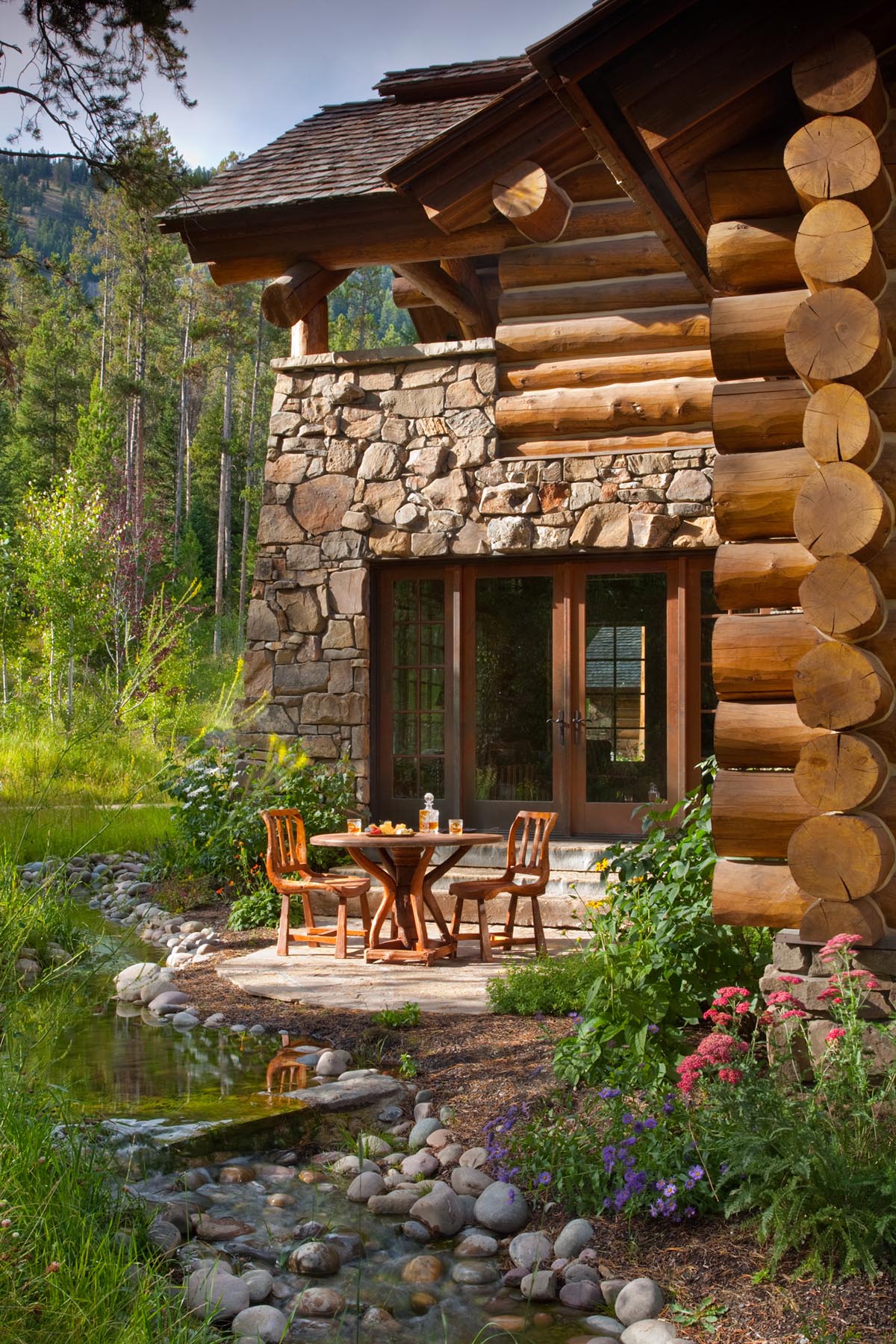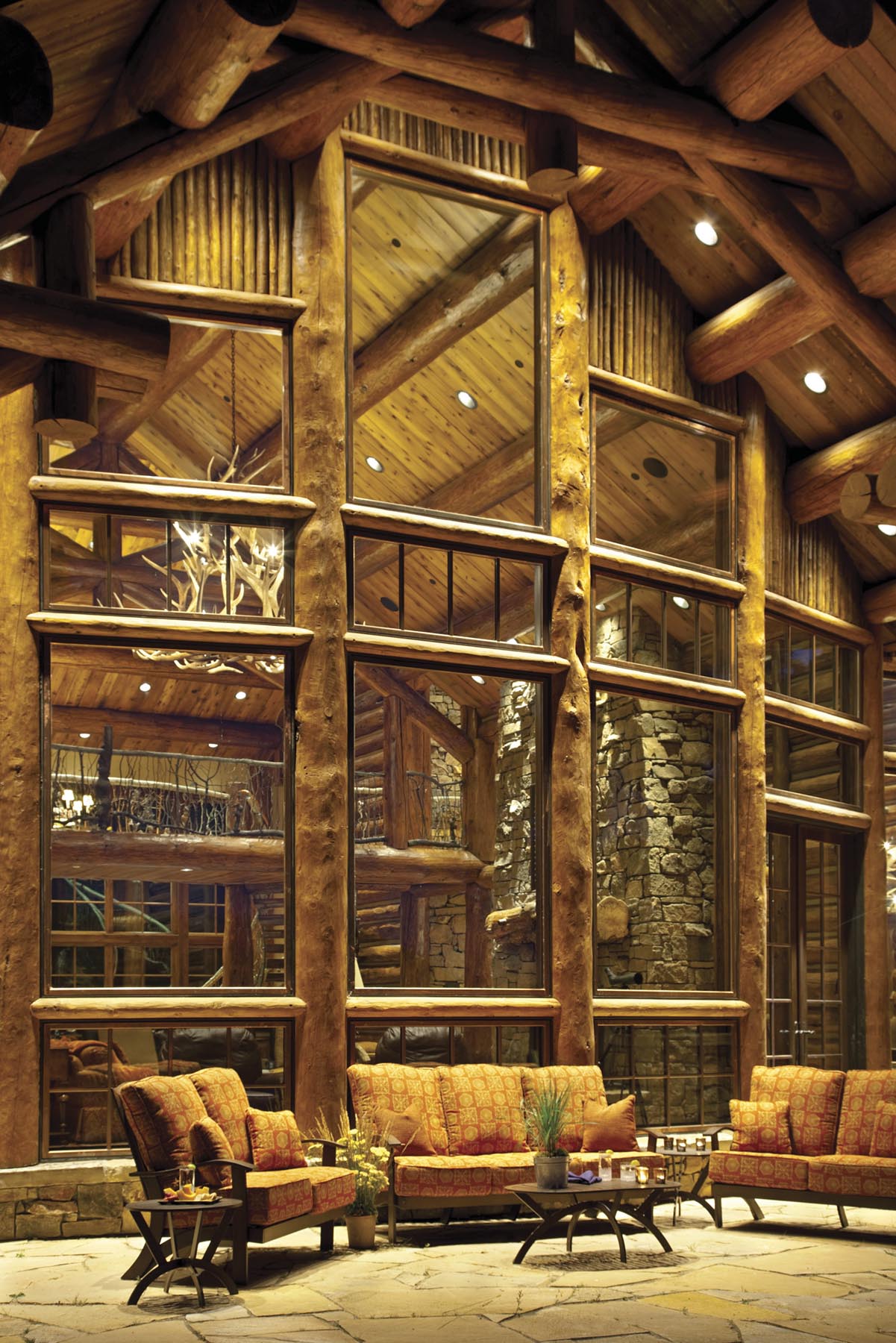
22 Aug Outdoor Living
If one element defines architecture in the West, it is the connection to the land. The beauty of this place draws people here, so much so that it’s hard to leave it just sitting out there. In response, outdoor living spaces have become a natural extension of the modern home.
Erase the dodgy image of a weathered picnic table plunked in the grass out back and replace it with a more pampered perspective: Think comfort, class and house couture. Fully equipped outdoor kitchens have brought dining al fresco to a higher level. Even as expansive windows draw mountain views into our laps in the great room, the allure of enjoying the fresh air continues to draw people back out into the elements. Sunsets may entice guests outside, but the yawning firepit, surrounded by cushioned benches is what keeps them out late to enjoy smores and the starlit sky.
Outdoor living has become such a priority in the Northern Rockies that architects frequently design homes where each individual room has a direct outlet to the surrounding landscape.
Staying separate, yet connected is the way principal architect, Kyle Tage, of Locati Architects in Bozeman, Montana describes his approach. In a firm that has established a signature style that upholds the aesthetic of the environmental setting as much as the built environment, Tage and his associates concentrate on creating homes that bring the outside in.
As an example, Tage noted a home in Big Sky’s Yellowstone Club that was driven by site and the owner’s emotional relationship to Lone Peak, the seasonal changes at 8,800 feet above sea level and the exquisite austerity of high country living.
Working within the owner’s interior designer on the Quiet Waters residence, project architect Darin Hoekema designed the house with an integral outdoor living element. Rather than a place for simply relaxing, this house is structured as a breezeway that facilitates the flow of the main house with the pool house, while creating an attractive, functional outdoor area that is a core area of the house summer or winter. Open on both sides, the breezeway echoes elements of the interior spaces — stone, wood, iron — in ways that unite the architectural program.
“The owners wanted to bring a breath of fresh air into every room of the house,” Hoekema explained, “ The outdoor spaces are really an extension of the interior living spaces.” At the owner’s direction, there is hardly a space inside the house that doesn’t link to the outside, whether it is a path to the meadow or an outlet to ski to the chairlift.
“People come here because they love the outdoors, so it’s important to cultivate intimate spaces to enjoy time relaxing outside and taking advantage of the landscape,” said interior designer Kim Olivieri of the Jackson, Wyoming-based Elements of Design.
She recently completed interiors in the 16,000-square-foot Phillips Ridge residence in Jackson, Wyoming. As an interior designer Olivieri worked with the owners of this vacation home to cultivate the outstanding natural setting within the interiors and outdoor living spaces. Managed as a vacation rental by The Clear Creek Group, it was as important for the home to accommodate a large group of guests as it was to create intimacy for a small gathering of family.
Sweeping views of Sleeping Indian Mountain dominate the eastern side of the house, making Olivieri’s design challenge not so much a matter of creating space as much as defining it.
“Two doors from the great room basically extend the main living area outside,” noted Olivieri, “making it convenient to entertain out there, but it’s important to establish smaller zones for quiet conversation.”
In the same vein, architect Jim McLaughlin, of McLaughlin and Associates in Ketchum, Idaho often attempts to “blur the distinction between inside and outside.” He has designed projects in the U.S. and internationally with outdoor living spaces as diverse as lanais in Hawaii to infinity pools in New Zealand. As a rule his firm designs buildings that, both inside and out, have a sense of place.
“Our goal is to create architecture that is not only sensitive to the functional and emotional needs of the users but to the surrounding environment,” explains McLaughlin.
- Architect Darin Hoekema, of Locati Architects cultivated an outdoor kitchen and entertaining area in this Yellowstone Club residence that functionally connects the main house with an outbuilding, provides shelter and ambience for outdoor dining and artfully frames the view of Lone Peak.









No Comments